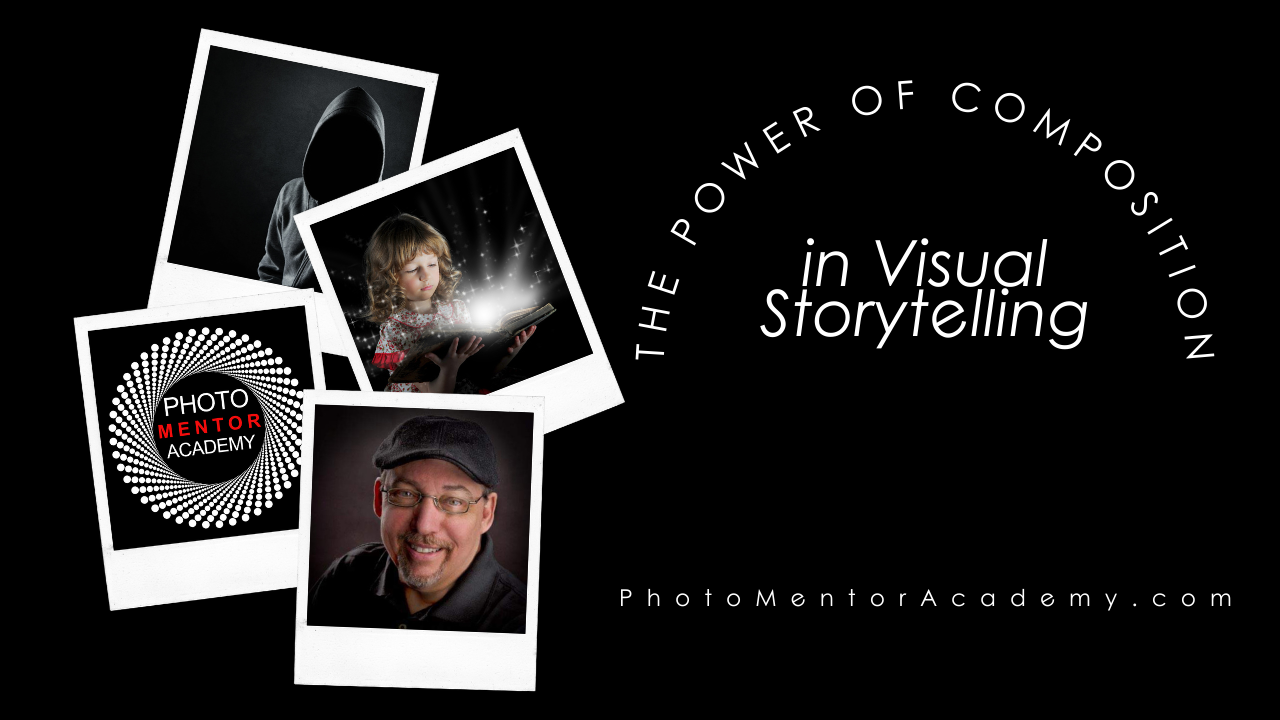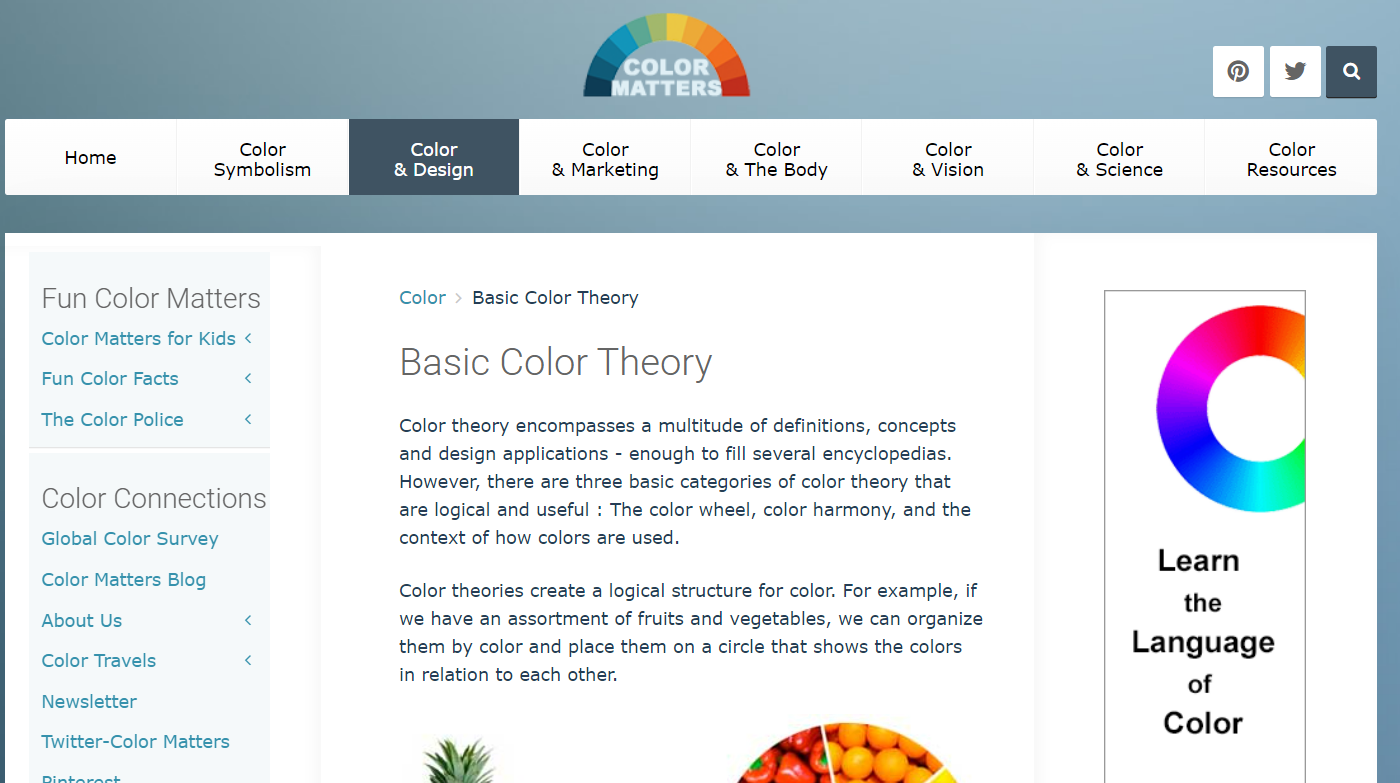The Power of Composition in Visual Storytelling
Feb 03, 2023
Learning about composition presents many things to master. Knowing the principles and using them effectively, individually or in combination, gives you an advantage in telling a story through your work.
Part of design entails communicating an idea, a perspective, or a point of view. But conveying the magic you envision or expressing your creativity in a way that shares your meaning or even a feeling is much more difficult.
That’s why studying the elements of art and composition and understanding how quickly the brain works– even at a subconscious level– is critical in creating and telling a meaningful story through your photography.
Composition and design techniques apply outside of photography, too, so my initial interest and investigation into the subject began with presentations in mind. Plus, visuals and graphics are essential to digital creators in countless other ways.
By adopting composition and design principles, you can communicate visually with power, impact, and intent. Perhaps more importantly, you can inspire, delight, educate, enlighten, or intrigue viewers.
“Learn the rules like a pro, so you can break them like an artist.” ~Picasso
Layout
The overall condition or foundation of a design is the layout, which contains all the content and components. Often, a layout is universal across pages, campaigns, etc. Grid systems allow for consistent placement and spacing within a format and help scale or layer. Repetitive styles, patterns, and other visual cues are established there (in grids) for balance, flow, and consistency.
Hierarchy
Hierarchy is also integral to layouts emphasizing specific aspects within a design. You can highlight different elements in different ways. For example, using font size or weight for text, bright or high-contrast colors, sizing or scaling factors, proximity, etc. Positioning, balance, and depth are among other methods for hierarchical display.
White Space
White space has to do with positioning or placement but is also called negative space. A cleaner or more crowded use of space communicates emotionally, often quite powerfully, sometimes overwhelming, or simplicity-inducing, and more.
Proper use of white space always lends to the story.
Why our eyes look for
patterns in architecture
Alignment
Aligning elements in an area adds to your story and shows hierarchy within the frame. Alignment can be expected or utterly unexpected by design and can generate engagement or guide the eye in a direction. Alignment can create patterns in an image.
Contrast
Ansel Adams’ practice in black and white photography shows that he’s the king of contrast, using high-level greyscale to capture his unforgettable photography.
In contrast to white space– representing negative space (or exact opposites like black/white)– the contrast in photography also represents grayscale, adding depth and layers to a look. Details are best depicted through good contrast or show bold opposites for stark attention.

Color, texture, contrast, and hierarchical alignment create striking depth in this image.
Texture
A mention of texture has a place somewhere around here, and creating texture mixes a few things, including contrast and hierarchy, alignment and size, perspective, and leading lines. Shadows and light/dark add texture. So does focus or bokeh.
Color
Besides grayscale, the range of gray shades between black and white, color also reveals contrast to spotlight particular elements within a design layout. Besides using contrasting colors to attract attention, color combinations and other color design variations offer a powerful visual intensity, add mood, and insinuate feelings.
Check Adobe’s Basic Color Theory Page, and play around with color palettes; review the Color & Marketing section or Color Symbolism. And have fun!

Sometimes color combinations surprise you, and yes, color can create hierarchy. Experiment with color, and try lighting to manipulate it. And again, have fun with color. Colors make bold statements and may even “carry” an image. Color’s all that!!
The use of colors, contrast, hierarchy, and white space aid in creating shading, shadows, intensity, and detail to inspire your story.
One thing to keep in mind for colors and fonts is user experience or accessibility, especially for web-focused applications. Not keeping the user, viewer, or audience experience in mind constrains your work from getting seen, understood, and appreciated. (And why using brain-friendly composition and design tactics are valuable.)
Here’s a Color Wheel that gives you palettes based on your preferences. Take it for a spin or five:)
Why Color Matters
More than one painting, photo, event, film, drawing, or other artistic experience is color-inspired. What color inspires you? Have you taken it for a creative spin yet?
“Substantial research shows why color matters
and how color plays a pivotal role in all our visual experiences.”
~Jill Morton, Colorcom
In the article, Why Color Matters, Jill Morton explains how research reveals “people make a subconscious judgment about a person, environment, or product within 90 seconds of initial viewing and that between 62% and 90% of that assessment is based on color alone,” among other research-driven information.
 Color contrast or limited use of colors makes a bold statement.
Color contrast or limited use of colors makes a bold statement.
The psychology and symbolism of color are often essential considerations for branding, corporate design, and packaging. Attracting customers through color is BIG business, and another indication of the subconscious emphasis color delivers.
Awareness of color and color design adds a lot of inspiration to your campaign designs or brand identity and recognition if used effectively.
Understanding color as a symbol helps communicate meaning through nonverbal means, yet it represents a universal understanding.
Rule of Odds
According to Wikipedia, “The ‘rule of odds’ suggests that an odd number of subjects in an image is more interesting than an even number. Thus if you have more than one subject in your picture, the suggestion is to choose an arrangement with at least three subjects. An even number of subjects produces symmetries in the image, which can appear less natural for a naturalistic, informal composition.”
Interestingly, the term is listed under the topic “visual arts.” This is a good reminder of the combination of art and story you are trying to relay by learning the brain's language as it swiftly interprets what it sees at lightning speed.
Avoid symmetry in adopting the rule of odds in your work to make the brain stop and take notice by changing up the expected pattern.
The Appeal of Repetition
Using repetition is mesmerizing but can also establish a pattern allowing you to showcase something different, as it sticks out in your hypnotic pattern with a swoosh. The hero highlighted in a definitive pattern gains quick attention and pulls the eye of the viewer to your subject lickety-split.
A repetitive pattern creates unique designs and perspectives on their own as well.
Leading Lines
Leading lines often create repetition in an image, plus take a viewer’s attention to a particular spot. But leading lines don’t have to be lines at all. Landscape and scenic photographers create leading lines with trees, mountainscapes, stones, fences, and other natural features. A winding creek is a good example or railroad tracks.

An instance capturing leading lines, rule of thirds, and repetition in one shot?
Rule of Thirds
One way to divide your frame into grids is to use thirds. Thirds also honor the rule of odds by breaking the expectation of even numbers or centered main subjects.
There are several ways to use the Rule of Thirds to create attention on a desired area of your photo. Experiment with this one, and remember the center section isn’t the only third to focus on in your images. Use it, like other techniques, to draw the eye to where you want viewers to look.
Place a viewer’s attention where you want by using this grid of thirds!
Visualizing your photograph’s story in thirds helps you learn to “fill the frame” and draws the eye of the viewer to the focal point. Establishing a feeling of movement or direction adds an active quality to your shot—another thing you can achieve by mastering this design rule.
“The main reason for observing the rule of thirds is to discourage placement of the subject at the center or prevent a horizon from appearing to divide the picture in half.” ~Wikipedia
Cognitive Capabilities Increase Design Sense
All techniques and representations showcased so far are ways to help you communicate nonverbally yet meaningfully. Test each individually. Then try working with combinations.
But remember, striving to create a universal meaning for others through your photography requires an understanding of which elements of design and composition to use or NOT use.
Selecting the perfect mix of ingredients and uniquely blending them to craft a tale is the talent and goal. Learning and recognizing these design elements is the first step.
Only when you observe and continue to understand these techniques will you be able to properly use components to conjure what you imagine in a way that brings that meaning to others. More than “capturing” something in the frame of your image, you are actively “creating” it instead.

Color design in this image is uber appealing. Notice other captivating composition techniques?
Observing lighting, the setting/physical environment, subject matter, purpose, and other factors in advance of shooting allow you time to envision and pre-plan. You’ll love how your photography becomes intentional and not accidental.
Learn to control your work as you familiarize yourself with these design prospectives and others. Practice them, observe, and study.
Enhance your photography with your take, a personal spin, or a unique viewpoint only you can deliver. Some photographers progress to a “signature” look or styling, making their work recognizable and known.
No matter your goal with photography, learning the language of art and design lets you speak to the human brain without words more clearly. Of course, your preferred genre is a factor in how to express your visual messages, but flexibility and exclusivity in what you produce start with a thoughtful understanding of the basics.
When you play into the subconscious constructs of how a human brain functions, you can put that language into use to convey the visual story your photograph is trying to tell.
Creativity by Design
Many artists and creators base their aesthetics on gut instinct and feelings. Still, practice, natural and acquired skills, industry knowledge/education, and even experimentation are factors.
When you want to develop and improve, bringing ideas from your mind’s eye to life through your photography, these elements and the views around them are helpful. So, understanding these concepts (and using all tools at your disposal) allows you to express and convey a photograph’s story compellingly.
Further, using the visual language of art to make subconscious connections with the human brain smooths the way for your main point (subject, hero) to be seen and understood.
Strong images are compelling because they tug at the viewer, drawing them in and invoking feelings, memories, or thoughts. But every element in the frame needs to be part of the story you are trying to communicate or, conversely, take away from it.
Of course, each of the topics introduced in this article is much more complex to study and understand. Luckily, Photo Mentor Academy covers all of this and more in the Learn to SEE Like an Artist mentorship program.
Also, look for new blog pieces, YouTube videos, and our exclusive ShutterShots Newsletter editions diving deeper into these and other insightful and informational topics for photographers.

